External links
![]() Media related to Moro Nuba at Wikimedia Commons
Media related to Moro Nuba at Wikimedia Commons
The Moro Nuba are a sub-ethnic group of the Nuba peoples in the Nuba Mountains of South Kordofan state, in southern Sudan. Many members of this ethnicity are Christians. The population of this ethnic group possibly exceeds 80,000 people.
Until the early 1940s, all of the Moro Nuba resided on the tops of mountains in the Nuba Mountains, similar to many other Nuba peoples. [1] Various Nuba ethnic groups, including the Moro, were driven up to higher elevations because of tribal wars, wandering nomads, government slave raids, and attacks from Sudanese forces during the Mahdist War. Specifically, the Moro sought protection in the hills from slave traders. [1]
After Sudan came under Anglo-Egyptian rule, the Moro began to migrate downwards into the surrounding plains of the Nuba Hills. [2] [1] A strong government under Condominium rule meant that intertribal wars were much more infrequent, and also ceasing previous government attacks on Nuba peoples. [2] [1] The Moro also migrated downwards because of population growth and a lack of farmable land. [2] Additionally, a yellow fever epidemic in 1940 caused the Moro to burn their farms in attempts to rid their villages of the disease, which in turn destroyed their farmland and forced them to migrate downward. [3] Down-migration of the Moro into surrounding plains allowed for them to engage in agriculture, especially cotton which had developed into a cash crop of Sudan. [4] They also grow maize, sorghum, groundnuts, gourds, okra, horse beans, and sesame, all of which are indigenous to them. [5] Additionally, down-migration resulted in increased interaction between various clans of the Moro, and began attracting working-age males into mechanized agriculture from outside the hills. [4] [1] [2]
The Moro do not have ownership over their land, despite being indigenous to it. [6] A series of land registration acts starting in 1905 and culminating with the 1970 Unregistered Land Act, decreed that any land not registered to private owners was government property, including land in the Nuba Mountains and other previously excluded indigenous lands. [7] As a result, the Moro are often forced to move away from their land to work in mechanized agriculture for other parties, in order to generate income. [7] [2]
In addition, the Sudanese government has sponsored the immigration of Baggara and Jellaba ethnic groups into indigenous Moro lands, effectively pushing out the Moro from their farming lands. [6] As a response, the Moro organized the Nuba Mountain Political Union, though success has been limited. [8]
Modern Moro culture, including religion, has been described as an "accretion" of outside influences, as the Moro adjust to the modern world while embracing traditional practices. [9] Additionally, the Moro do not refer to themselves as the Moro, as they have no common tribal name, only being referred to as the Moro by neighboring ethnic groups. [10]
In between 1929-1940, colonial administration enforced a policy dubbed the Nuba Policy, which attempted to preserve the indigenous cultures of the Nuba peoples and additionally prevent their Arabization. [11] [12] To do so, they grouped various Nuba peoples, including the Moro, into provinces governed by singular meks, or governing chiefs. [11] [1] [2] Because of their close proximity, it was necessary for ethnic groups to differentiate from one another to preserve their cultures, which strengthened their ethnic identity salience and widened divisions between neighboring ethnic groups. [11]
For example, despite Sudan being a majority Muslim country, most Moro people practice a syncretic form of Christianity, introduced by British-sponsored missionaries, combining the Christian faith with traditional ritual practices. [4] [13] [14] The Moro are neighbored by various Baggara tribes who also live in the Nuba Mountains, who dominate local trade. [4] As a result, the Moro also identify with Christianity as an ethnic faith to differentiate themselves from their Baggara competitors, who are Muslim. [4]
Additionally, the Moro maintain this strong sense of ethnic identity by disallowing intermarriage between other ethnic groups, and the integration of non-Moro into their society. [10] Some scholars suggest this is how the Moro have resisted Islamization in the Nuba mountains, which has affected other neighboring ethnic groups. [10]
Society is organized into patrilineal clans, with several clans occupying each hill. Individual clans also have specialized roles, including performing religious ceremonies and leading raiding parties. [1] Before Condominium rule, the Moro had no system of tribal leadership. [1] However, colonial powers implemented a system of elected meks, who had assistance from junior chiefs from surrounding hills. [2] [1]
The Moro are split into five specific age groups, which are ngere (ages 1–15), epidi (ages 15–22), udoming (ages 23–30), maji (old adults, and utari (elders). [2] Epidi commonly engage in stickfighting as a form of entertainment and friendly competition, and they are encouraged to do so. [2] Each age group also has specialized responsibilities, such as ngere helping with household tasks and udoming leaving the plains to work in mechanized agriculture. [2] The transition of age groups is often accompanied by ceremony closely related to agriculture. [15]
The Moro Nuba speak the Moro language of the Kordofanian languages group, in the major Niger–Congo language family. [16] Additionally, Moro is structurally similar to Bantu languages, despite not sharing any cognates. It follows a subject-verb-object word order. [16] The Moro people do not have a written language, meaning that much of their history, especially migration and movement, has been forgotten. [2]
Because of its close proximity to the Sudan-South Sudan border, violence between both states in various conflicts, notably the Second Sudanese Civil War, has taken place in the Nuba Mountains, including the hills where the Moro live. [17] [18] The Moro, among other Nuba peoples, have been subject to the crossfire of intense violence between both forces, and have been targeted by Sudanese militias for their support or association with the Sudan People's Liberation Movement and Army (SPLM/A). [18] [8] The 1989 Popular Defense Forces Act, which allowed militias to act as paramilitary forces on behalf of the Sudanese government, was particularly devastating for Moro people as ethnic militias like the Baggara were more inclined to violence against differing ethnic groups. [17] In addition, displaced Nuba peoples have been relocated into "peace camps", where they are used as cheap labor for mechanized agriculture. [19] Large populations of displaced Moro have also fled to Omdurman, South Sudan, and Egypt. [20]
Various human rights concerns have been raised over the unprovoked attacks on Nuba peoples, including the Moro. [21] Attacks on the Nuba sponsored by the Sudanese government have been touted as genocide-by-attrition, as an intentional erasure of these peoples. [21] The Sudanese government has also been accused of the ethnocide of the Moro, who claim indigenity to the Nuba Mountains. [6] Such targeted violence continues to happen today, perpetrated by Sudan's Rapid Support Forces (RSF) who operate under General Abdel Fatteh al-Burhan, who took power through a military coup in October 2021.
![]() Media related to Moro Nuba at Wikimedia Commons
Media related to Moro Nuba at Wikimedia Commons

The demographics of Sudan include the Sudanese people and their characteristics, Sudan, including population density, ethnicity, education level, health, economic status, religious affiliations, and other aspects of the population.
Nubians are a Nilo-Saharan ethnic group indigenous to the region which is now Northern Sudan and Southern Egypt. They originate from the early inhabitants of the central Nile valley, believed to be one of the earliest cradles of civilization. In the southern valley of Egypt, Nubians differ culturally and ethnically from Egyptians, although they intermarried with members of other ethnic groups, especially Arabs. They speak Nubian languages as a mother tongue, part of the Northern Eastern Sudanic languages, and Arabic as a second language.
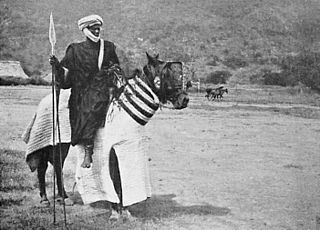
The Baggāra or Chadian Arabs are a nomadic confederation of people of mixed Arab and Arabized indigenous African ancestry, inhabiting a portion of the Sahel mainly between Lake Chad and the Nile river near south Kordofan, numbering over six million. They are known as Baggara and Abbala in Sudan, and as Shuwa Arabs in Cameroon, Nigeria and Western Chad. The term Shuwa is said to be of Kanuri origin.
The Fur are an ethnic group predominantly inhabiting western Sudan. They are concentrated in the Darfur region, where they are the largest ethnic group. They speak the Fur language, which belongs to the Nilo-Saharan family.
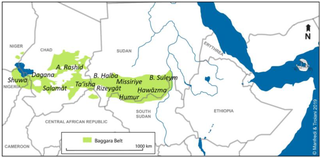
Hawazma, part of Sudan's Baggara tribe, are cattle herders who roam the area from the southern parts of North Kurdufan to the southern borders of South Kurdufan, a distance of about 300 kilometers. Through their nomadic movement, the Hawazma know the area, terrain, ethnic groups, local tribes, tribal cultures, ecosystems, climate, vegetation, existence of risks and diseases, and water resources better than any other inhabitants of the region. The term Baggara is a collective name applied to all cattle-herding tribes with Arab roots. Cattle herders from Nuba tribes are not called Baggara. Cattle herders of middle and eastern Sudan, although they are Arab in roots, are also not Baggara. The Baggara occupies a wide area, from Kordofan, Mid-Western Sudan, to Darfur in the far Western Sudan and extending to neighboring Chad. They are a collection of seven major tribes: Hawazma, Messiria Humr Messiria Zurug, Rizeigat, Ta’isha, Habbaniya, Beni Halba, Awlad Himayd, and Beni Selam. All Baggara have similar physical facial features, costumes, dance, religion, food, and in general a common culture and way of life.
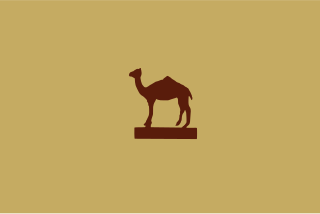
Kordofan is a former province of central Sudan. In 1994 it was divided into three new federal states: North Kordofan, South Kordofan and West Kordofan. In August 2005, West Kordofan State was abolished and its territory divided between North and South Kordofan States, as part of the implementation of the Comprehensive Peace Agreement between the Government of Sudan and the Sudan People's Liberation Movement. West Kordofan was reestablished in July 2013.

The Second Sudanese Civil War was a conflict from 1983 to 2005 between the central Sudanese government and the Sudan People's Liberation Army. It was largely a continuation of the First Sudanese Civil War of 1955 to 1972. Although it originated in southern Sudan, the civil war spread to the Nuba mountains and the Blue Nile. It lasted for almost 22 years and is one of the longest civil wars on record. The war resulted in the independence of South Sudan 6 years after the war ended.
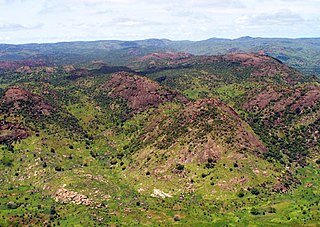
The Nuba Mountains, also referred to as the Nuba Hills, is an area located in South Kordofan, Sudan. The area is home to a group of indigenous ethnic groups known collectively as the Nuba peoples. In the Middle Ages, the Nuba mountains had been part of the Nubian kingdom of Alodia. In the 18th century, they became home to the kingdom of Taqali that controlled the hills of the mountains until their defeat by Mahdi Muhammad Ahmad. After the British defeated the Mahdi army, Taqali was restored as a client state. Infiltration of the Messiria tribe of Baggara Arabs has been influential in modern conflicts. Up to 1.5 million people live in the mountains, mostly ethnic Nuba, with a small minority of Baggara.
The Nuba people are indigenous inhabitants of central Sudan. Nuba are various indigenous ethnic groups who inhabit the Nuba Mountains of South Kordofan state in Sudan, encompassing multiple distinct people that speak different languages which belong to at least two unrelated language families. Since 2011, when the southern part of Sudan became an independent state as South Sudan, the Nuba now live in the southern part of Sudan. Estimates of the Nuba population vary widely; the Sudanese government estimated that they numbered 2.07 million in 2003.
El-Gadarif, also spelt Gedaref or Gedarif, is the capital of the state of Al Qadarif in Sudan. It lies on the road that connects Khartoum with Gallabat on the Ethiopian border, about 410 kilometres (250 mi) from the capital.

The Rashaida, also known as Bani Rasheed, are an ethnic group inhabiting the coastal plain of the Red Sea stretching from the Sudanese city of Port Sudan to the Eritrean city of Massawa. They are the descendants of Arab tribes people from Hejaz, who fled the Arabian peninsula in 1846 as the Saudis rose to power. They are mostly nomadic and constitute 187,500 people in Eritrea and 168,000 people in Sudan, mainly in the eastern part around Kassala.

The Rizeigat, or Rizigat, or Rezeigat are a Muslim and Arab tribe of the nomadic Bedouin Baggara people in Sudan's Darfur region. The Rizeigat belong to the greater Baggara Arabs fraternity of Darfur and Kordofan and speak Sudanese Arabic. They are primarily nomadic herders and their journeys are dependent upon the seasons of the year. They are a branch of the Juhayna group. They are divided into the Abbala (camel-herding) Rizeigat, who live in northern Darfur and Chad, and the Baggara who inhabit south-east Darfur. In turn they are divided into several large clans, notably the Mahamid, Mahariya and Nawaiba. The ecological differences between the north and south of Sudan allowed for two different types of nomadism to evolve: camel herders in the north and cattle herders in the south.
Gawamaa or Gawám'a is a Sudanese ethnic group. They are a large sedentary tribe in North Kordofan, and sections of them also helped form the Halafa sub-group of the Hawazma tribe, itself a sub-group of the larger Baggara group. According to British colonial administrator Harold MacMichael, the Gawamaa were one of six non-Hawazma tribes integrated into the Hawazma tribe in the mid-eighteenth century by way of an oath.

The Messiria, known also under the name of Misseriya Arabs, are a branch of the Baggara ethnic grouping of Arab tribes. Their language is Sudanese Arabic. Numbering over one million, the Baggara are the second largest ethnic group in Western Sudan, extending into Eastern Chad. They are primarily nomadic cattle herders and their journeys are dependent upon the seasons of the year. The use of the term Baggara carries negative connotations as slave raiders, so they prefer to be called instead Messiria.
The Daju people are a group of seven distinct ethnicities speaking related languages living on both sides of the Chad-Sudan border and in the Nuba Mountains. Separated by distance and speaking different languages, at present, they generally have little cultural affinity to each other.
Baggara cattle are an autochthonous Sudanese breed part of the shorthorned Zebu group of breeds of eastern Africa. Baggara cattle are smaller and thinner than the Boran breed of Kenya and Ethiopia. They are named for the Baggara people of western Sudan and central Chad, who raise Baggara cattle primarily for beef. Baggara means cattle people in the Shuwa Arabic language of these people. The related Butana and Kenana breeds of the Nile Valley are dairy breeds and need much more feed and water than the Baggara.
The Keiga people are a sub-ethnic group of the Nuba peoples in the Nuba Mountains of South Kordofan state, in southern Sudan. The population of this ethnicity likely is below 10,000. They speak Keiga, a Nilo-Saharan language. The language belongs to the Kadugli–Krongo family.

Photography in Sudan refers to both historical as well as to contemporary photographs taken in the cultural history of today's Republic of the Sudan. This includes the former territory of present-day South Sudan, as well as what was once Anglo-Egyptian Sudan, and some of the oldest photographs from the 1860s, taken during the Turkish-Egyptian rule (Turkiyya). As in other countries, the growing importance of photography for mass media like newspapers, as well as for amateur photographers has led to a wider photographic documentation and use of photographs in Sudan during the 20th century and beyond. In the 21st century, photography in Sudan has undergone important changes, mainly due to digital photography and distribution through social media and the Internet.
Andreas Kronenberg was an Austrian social anthropologist, active as researcher in North Africa and Sudan, and later as professor for his academic field with a special focus on Africa at the University of Frankfurt/Main. He published social anthropological studies, mainly based on his research, including participant observation, during the 1950s in French Algeria, French Equatorial Africa, and in the early years of the Republic of Sudan.
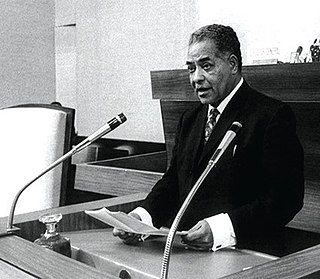
Mansour Ali Haseeb FRCP FRCPh was a Sudanese professor of microbiology and parasitology.
{{cite book}}: CS1 maint: multiple names: authors list (link){{cite book}}: CS1 maint: multiple names: authors list (link){{cite book}}: CS1 maint: multiple names: authors list (link)